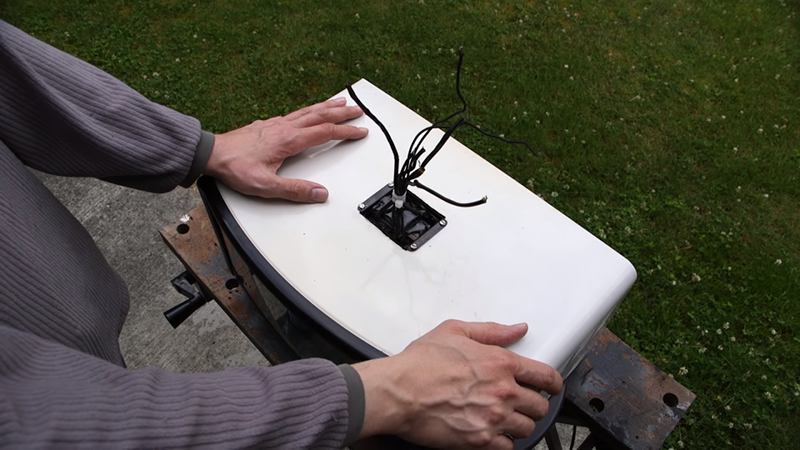We always enjoy watching [Mr. Carlson’s] videos because he looks like he is taping in a rocket ship set from a 1950s drive-in movie. In a recent video, he identified an old oscilloscope that had a transformer assembly that is potted with a pair of capacitor inside. The capacitor failed so [Carlson] decided he would repair it. The problem? The transformer and capacitor are potted together with some sort of tar compound. You can see the result in the video below.
He actually didn’t know for sure the capacitor was really in the transformer, but they were in the schematic and by process of elimination, it had to be inside. Once he liberated the transformer, he did some tests to identify the capacitor before the depotting. The depotting takes a lot of heat and could damage the transformer, so he wanted to make sure it was really in there.
Almost as interesting as the depotting is the preparation. Because the transformer still worked, he took careful measurements of the secondary voltages and also marked the wires in an unusual way with markers (we just use little tags on the wires).
The start of the process was a bit mechanical to remove grommets, but the main part took a toaster oven with a temperature control. He actually cut a hole in the oven to fit the transformer so he could work on the device while it was heated. He actually did the hot work outside which was wise since there is no telling what the potting compound from the 1930s has in it.
We were surprised at how cleanly the transformer came out. We wondered if a modern epoxy potting compound would release this easily and cleanly. The transformer was in a little cardboard box which probably made it easier to remove.
Inside the box? Two capacitors as predicted. The repair was quick and then it was just a matter of putting it back together with a new cardboard box, some rivets, and new grommets.
We’ve talked about more modern potting methods. If you want to know more about transformer theory, we have that too.
















Could have used the door lid for mounting the transformer.
If he was that worried about the heat, paraffin or white spirit both dissolve tar.
The first part of the video should be Tar-Rated (sorry the Clown I ate was past the best-before date)
You should be careful, they don’t always taste funny when they go off.
I was wondering how to release when in modern epoxy also. I am thinking I’m going to try to dremel tool down to the capacitors on the bug zapper transformers I have to see if I can repair. I was thinking recently that a mill would be handy to slowly mill down into.
We used to remove IC epoxy with very strong hot sodium hydroxide which is not for the faint of heart. Really a fume hood and all the other goodies to use that without excessive risk.
We used to remove IC epoxy with very strong hot sodium hydroxide which is not for the faint of heart. Really a fume hood and all the other goodies to use that without excessive risk. Fuming nitric was what we used to remove small amounts but it was much slower. The Sodium hydroxide would eat down to the leadframe if that’s what we wanted.
Thanks for the details into the caustic methods. I’ll hold off on that until I get better than a ghetto fume hood implemented. I’ll try to document what I do wind up doing when I do get around to.
That transformer “has more than meets the eyes”.
I was really hoping to see a complete rebuild and not just a remove and chop out the capacitors. Oh well.
Hey it’s that guy who comments on every post again
I use a Ronco rotisserie roaster for depotting old transformers. It’s got far more room than a toaster oven. Regarding the potted caps, I would have left them alone and mounted replacement caps elsewhere in the chassis. I am lazy.